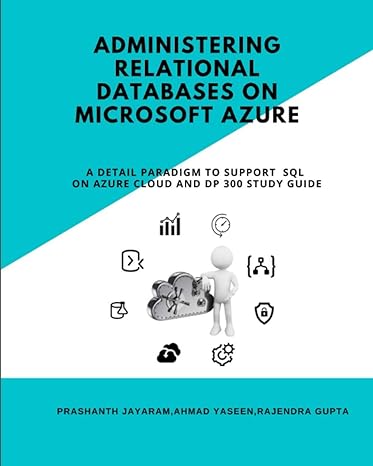Answered step by step
Verified Expert Solution
Question
1 Approved Answer
Driver class : omputer Lab: Multi-Level Feedback Queue Simulation a time-sharing computer system many users share the computer simultaneously. Such a syste In m typically

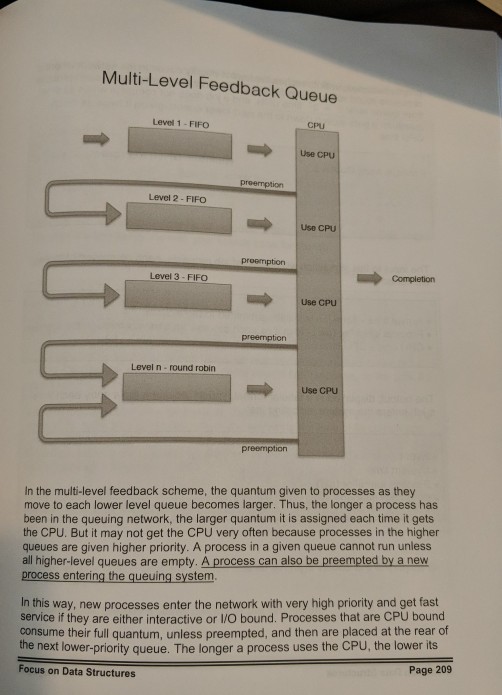
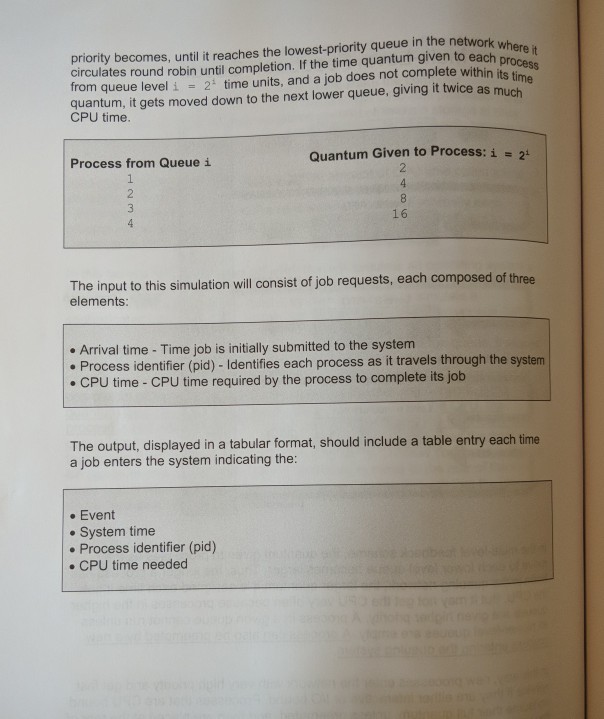

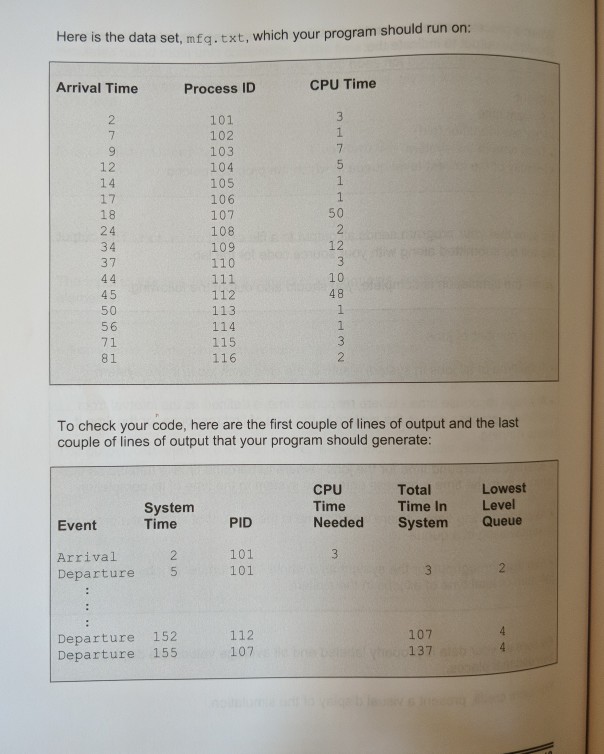

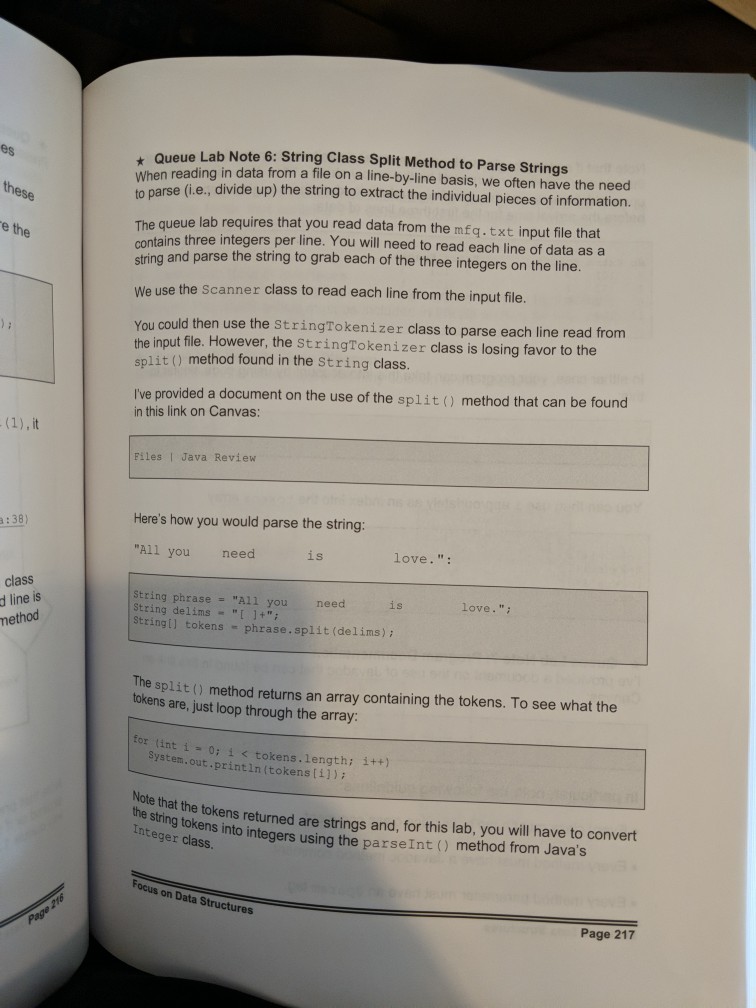
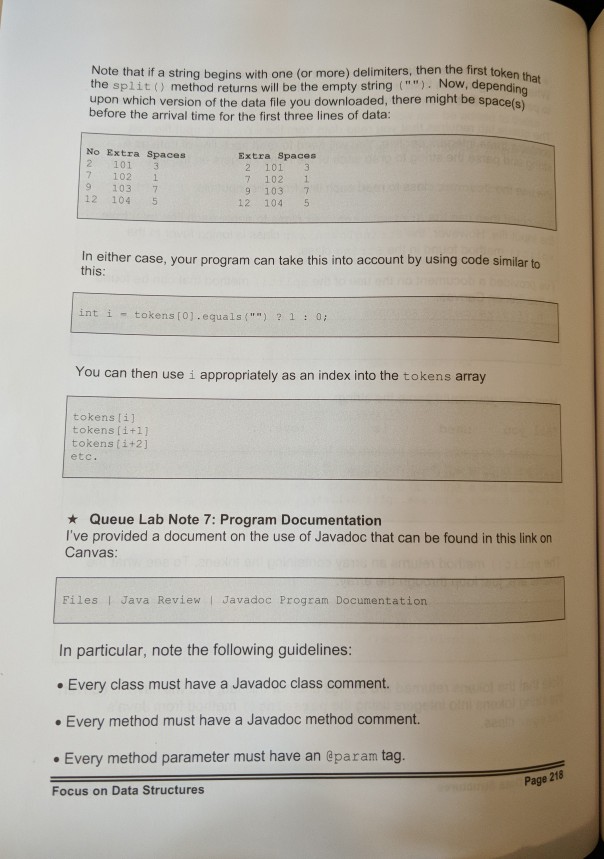
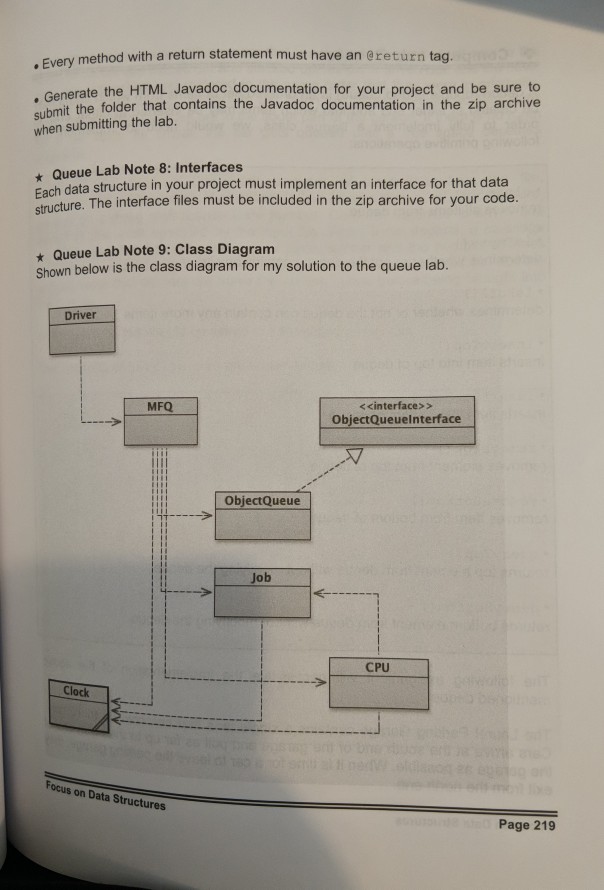
Driver class :
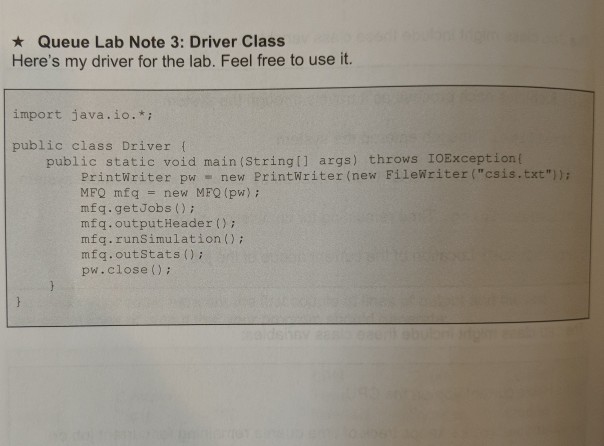
omputer Lab: Multi-Level Feedback Queue Simulation a time-sharing computer system many users share the computer simultaneously. Such a syste In m typically has a single CPU (the processor) and one main memory. Several user programs are placed in main storage at once (usually in a waiting queue(s) and the processor is switched rapidly between the jobs according to some job scheduling policy. Jobs (processes) are usually given a limited amount of CPU time called a tim slice or quantum. If a process does not complete before its CPU time expires, the CPU is preempted and given to the next waiting process. Eventually each process will acquire the CPU for a long enough period of time sufficient to complete its required job. In this lab you will write a Java program that will simulate an operating system's job scheduling policy to determine which process will be assigned the CPU when it becomes available. We will utilize a system of queues to simulate a sophisticated job scheduling mechanism, the multi-level feedback queue (MFQ) A new process enters the queuing network at the rear of the top queue. It moves through that queue FIFO until it moves to the front of the queue and gets the CPU. If the job completes or relinquishes the CPU to wait for l/O completion or completion of some other event, the job leaves the queuing network. If the quantum expires before the process voluntarily relinquishes the CPU, the process is removed from the CPU and placed at the rear of the ne xt lower-level ueue (preemption). The process is next serviced when it reaches the front of that queue if the first queue is empty. As long as the process continues using the full quantum provided at each level, it continues to move to the rear of the ne lower queue. Usually there is some bottom-level queue through that the process circulates round robin until it completes. omputer Lab: Multi-Level Feedback Queue Simulation a time-sharing computer system many users share the computer simultaneously. Such a syste In m typically has a single CPU (the processor) and one main memory. Several user programs are placed in main storage at once (usually in a waiting queue(s) and the processor is switched rapidly between the jobs according to some job scheduling policy. Jobs (processes) are usually given a limited amount of CPU time called a tim slice or quantum. If a process does not complete before its CPU time expires, the CPU is preempted and given to the next waiting process. Eventually each process will acquire the CPU for a long enough period of time sufficient to complete its required job. In this lab you will write a Java program that will simulate an operating system's job scheduling policy to determine which process will be assigned the CPU when it becomes available. We will utilize a system of queues to simulate a sophisticated job scheduling mechanism, the multi-level feedback queue (MFQ) A new process enters the queuing network at the rear of the top queue. It moves through that queue FIFO until it moves to the front of the queue and gets the CPU. If the job completes or relinquishes the CPU to wait for l/O completion or completion of some other event, the job leaves the queuing network. If the quantum expires before the process voluntarily relinquishes the CPU, the process is removed from the CPU and placed at the rear of the ne xt lower-level ueue (preemption). The process is next serviced when it reaches the front of that queue if the first queue is empty. As long as the process continues using the full quantum provided at each level, it continues to move to the rear of the ne lower queue. Usually there is some bottom-level queue through that the process circulates round robin until it completes
Step by Step Solution
There are 3 Steps involved in it
Step: 1

Get Instant Access to Expert-Tailored Solutions
See step-by-step solutions with expert insights and AI powered tools for academic success
Step: 2

Step: 3

Ace Your Homework with AI
Get the answers you need in no time with our AI-driven, step-by-step assistance
Get Started


